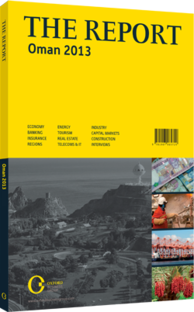Multiple markets: Increasing demand for natural gas as an energy source has created new challenges
One of the most pressing challenges thrown up by Oman’s rapid development since the 1970s is how to best utilise its energy resources. As with much of the region, in Oman this question is raised most frequently in relation to natural gas – the once-neglected by-product of the oil extraction process that is increasingly in demand as an energy source. Consumption of natural gas in Oman has seen a 180% increase over the last decade, according to the US Energy Information Administration, a rise that is largely attributable to the sultanate’s rapid industrialisation and natural gas’s usefulness as a feedstock in the production of materials such as glass, steel, plastics, paint and fabrics. Demand for natural gas has been further sharpened as a result of the role it plays in meeting the sultanate’s demand for electricity. According to the World Bank, 82% of Oman’s electricity production has been derived from natural gas for the past decade, with oil sources accounting for the remaining 18%.
Exports
As well as directing its natural gas to various domestic usages, Oman has recently established itself as a successful exporter of the product. Oman exports its liquefied natural gas (LNG) from two sources: Oman LNG and Qalhat LNG, with a combined capacity of 14.32bn cu metres per year, or a daily average of 39.64m cu metres per day. Both LNG exporters have inked agreements with a number of long-term customers, primarily in the Asian region, and the rising price of LNG in global markets has resulted in the product quickly establishing itself as a significant component of GDP. In 2012 Oman LNG, the nation’s primary supplier, reported a sizeable increase in revenues for the previous year, largely accounted for by robust international energy prices. According to its annual statement, total revenue for 2011 rose by 26.5% to $3.96bn from $3.13bn, while net income after tax also grew to $1.78bn, a year-on-year increase of $400m. Between them, Oman LNG and Qalhat LNG produced and dispatched 136 cargoes over the course of 2012, which included two relief deliveries to tsunami-hit Japan.
Domestic Demand
Balancing this highly successful LNG export activity with Oman’s rising domestic demand for natural gas is not an easy task. What had been a surfeit of supply in the early 1990s, shortly after the discovery of non-associated gas in Oman’s interior, has quickly become a shortfall. Insufficient gas feedstock for power generation has in the past resulted in interruptions to supply, and concerns have been raised on the limiting effect on economic growth and diversification that a constriction in gas supply threatens. On the other hand, the long-term nature of LNG export contracts makes it difficult for Oman to adjust its outflow from the country, even should it be willing to eschew the revenue.
Potential Solutions
Solutions to the problem, however, are numerous. Some amelioration has been secured with the 5.66m cu metres per day import of natural gas from Qatar via the UAE, which the sultanate has directed towards power generation.
Another potential source that remains uncertain due to political concerns is a proposed pipeline to bring 28.31m cu metres per day from the Hanjam and West Bukha fields Oman shares with Iran. At home, internal supply is set to be boosted by a number of tight gas projects being carried out by Petroleum Development Oman in its Block 6 concession, and private operators in Block 61 (see analysis). A regional power grid that is being constructed by GCC members presents the possibility of importing electricity, particularly from the UAE and its proposed nuclear facilities. The national oil company has established the first project in the Middle East to harness concentrated solar power for enhanced oil recovery, an activity that has traditionally relied heavily on natural gas. The challenge of addressing the natural gas supply gap is, therefore, being met across a number of fronts, all of which are long-term initiatives. In the short term the government will continue with the difficult task of balancing the needs of the domestic sector with its commitments to foreign export markets.
You have reached the limit of premium articles you can view for free.
Choose from the options below to purchase print or digital editions of our Reports. You can also purchase a website subscription giving you unlimited access to all of our Reports online for 12 months.
If you have already purchased this Report or have a website subscription, please login to continue.

